
A collection of 101 research writing idea prompts.
- Subject:
- English Language Arts
- Material Type:
- Activity/Lab
- Provider:
- E Reading Worksheets
- Author:
- E Reading Worksheets
- Date Added:
- 02/26/2019

A collection of 101 research writing idea prompts.
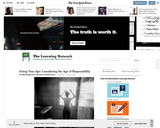
Students participate in a fishbowl discussion about various legal situations related to the "age of responsibility" and contribute their ideas and arguments on the matter to a Learning Network Student Opinion blog post. This resource from the New York Times discusses what standard(s) society should use to determine when a youth should be treated as an adult.
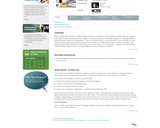
This recurring lesson encourages students to comprehend their reading through inquiry and collaboration. They work independently to choose quotations that exemplify the main idea of the text, come to a consensus about those quotations in collaborative groups, then formulate "quiz" questions about their reading that other groups will answer.
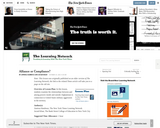
Students examine the relationships between and among powers inside and outside Afghanistan in connection to United States military aggression in the territory.

In this lesson, students examine the relationships between and among powers inside and outside Afghanistan in connection to United States military aggression in the territory.
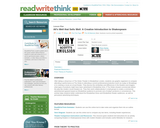
After taking a virtual tour of the Globe Theater in Elizabethan London, students use graphic organizers to compare attending a performance at the Globe to attending a Broadway play or movie. Then they work collaboratively to create a commercial advertisement geared towards an Elizabethan audience.
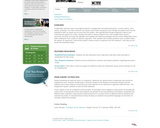
After gaining skill through anazlying a historic and contemporary speech as a class, students will select a famous speech from a list (included) and write an essay that identifies and explains the rhetorical strategies that the author chose while crafting an effective speech. The analysis will consider questions such as: What makes a good argument? How did the author's rhetoric evoke a response from the audience? Why are the words still famous today?

In this lesson, students will compare/contrast the information in their textbook about Andrew Jackson to political cartoons of the era. Students will identify symbols, allusions and stereotypes used in these cartoons and infer the intended message and tone of the Jackson era cartoons. Students will also identify any biases in the cartoons and check for historical accuracy, and then formulate their own opinion about the Jackson Administration. As a culminating activity, students will write an opinion essay that articulates their personal stance on Andrew Jackson’s character, using proper writing conventions.
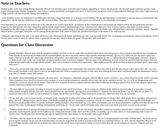
This resource is a collection of discussion questions and to supplement Animal, Vegetable, Miracle by Barbara Kingsolver.

A teachers guide for Annie John by Jamaica Kincaid, including questions for each chapter to increase understanding, topics for class discussion, and assignment ideas to deepen understanding of themes and context

This resource from the New York Times has students explore the play Antigone and a Spanish flamenco dance company's adaptation of the play. The lesson includes activities, graphic organizers and writing assignments.
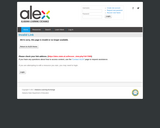
How are magnetism and electricity related? In this lesson, students will explore the relationship between magnetism and electricity, learn how to construct an electromagnet, and discover everyday uses of electromagnets. Students will create a multimedia presentation in which they will demonstrate their knowledge of electromagnetism.
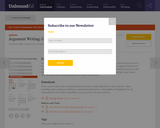
In this lesson, students will work together to offer peer review feedback and revise their arguments.

In this lesson, students will work in pairs in order to analyze the article "Social Media as Community" by Keith Hampton and evaluate the pros and cons.
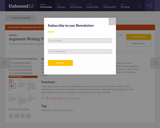
In this lesson, students will discuss the article, "Education 2.0: Never Memorize Again?" by Sarah Perez, focusing on pre-writing and organizing their writing according to task, purpose, and audience.
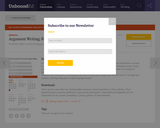
In this lesson, students will reflect on what was most effective in their writing, completing a quick write and then working in pairs to plan their approach going forward.

This resource is a collection of discussion questions to supplement The Art of Racing in the Rain by Garth Stein.

In this Common Core aligned teacher's guide to Beatrice and Virgil by Yann Martel, students will explore the idea that that there is more than one way of seeing and more than one way of communicating. This guide provides suggested topics for discussions, terms for consideration, supplemental reading, and activities.
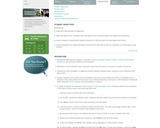
Students match the character traits of a character in a book they are reading with specific actions the character takes. Students then work in pairs to "become" one of the major characters in a book and describe themselves and other characters, using Internet reference tools to compile lists of accurate, powerful adjectives supported with details from the reading. The lesson uses The Scarlet Letter as an example, but this activity is effective with any work of literature in which characterization is important.

A teachers guide for Before My Eyes by Caroline Bock, including in-depth insight to the setting, characters, and author's inspiration, questions for class discussion, and activities to provoke deeper understanding of issues